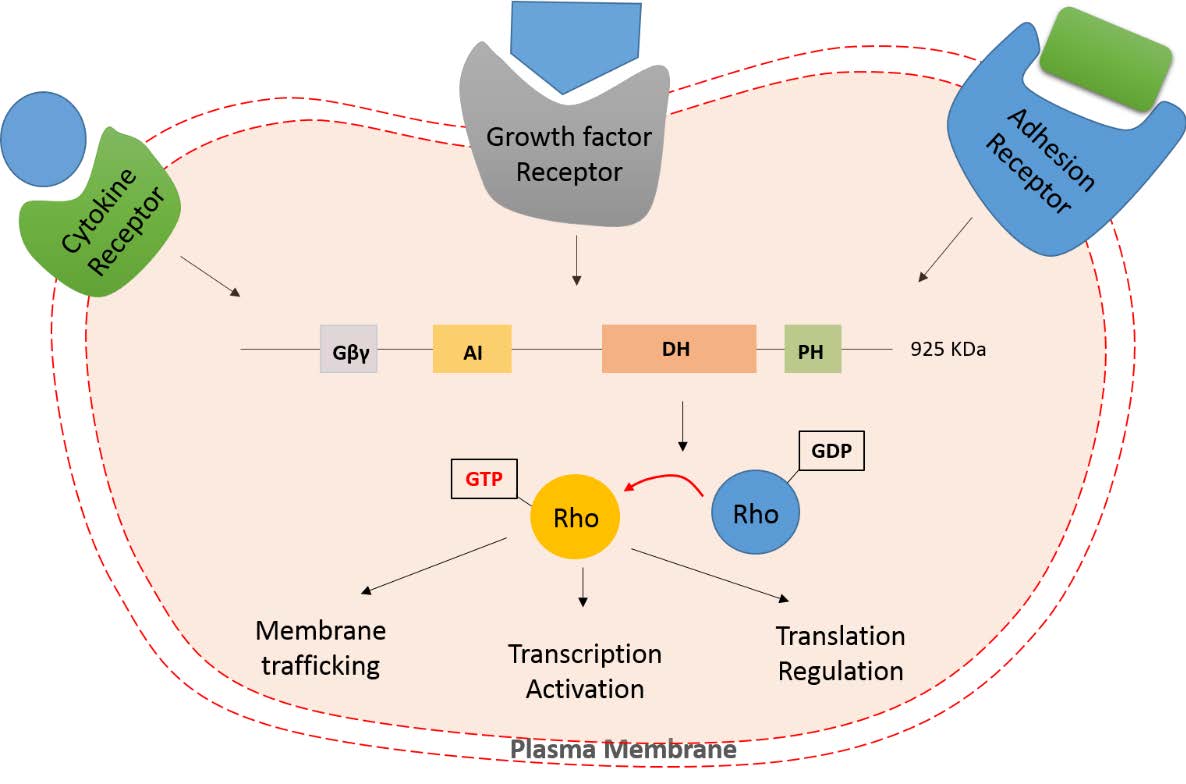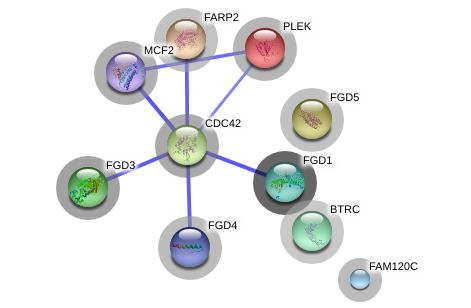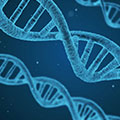1. Introduction
Aarskog-Scott syndrome (AAS, OMIM #305400) (also known as faciogenital dysplasia) is a complex developmental disorder initially described by Aarskog in a Finnish pedigree [1] and later by Scott [2]. Patients with AAS present with a range of developmental complications including short stature, hypertelorism, ptosis, long philtrum, micrognathia, broad nasal bridge, clinodactyly of the little finger and genitourinary abnormalities including cryptorchidism and shawl scrotum [3]. Causal genetic variants underlying AAS pathophysiology map to the proximal short arm of chromosome X (Xq11.22) [4] and, to date, 61 different mutations across the 18 exons of the FGD1 gene are reported as pathogenic in the context of the condition. The FGD1 mutational spectrum includes 32 missense mutations, 16 frameshift variants, 6 nonsense variants, 4 splice site variants, 1 in-frame deletion and 2 out of frame deletions [5,6,7,8,9,10].
While only a limited number of the reported cases have been molecularly confirmed (~35), the population incidence of two to three patients with a proven FGD1 mutation per year is suggestive of world population prevalence of 1/25000 [5]. It is notable that the reported mutations only describe 20% of the known cases of AAS [6] and the spectrum of genotype-phenotype correlations is unclear. Failure to identify pathogenic variants in patients who are referred for FGD1 mutation analysis must reflect extensive clinical and genetic heterogeneity in AAS. In particular, the phenotypic features of the condition overlap with several other developmental disorders. Since it is now possible to undertake cost-effective sequencing of genes of clinical interest, exomes, or indeed whole genomes, there is greatly increased confidence that phenotypic overlaps can be resolved and underlying genetic causal variation understood for AAS and AAS-like syndromes. We review here sources of phenotypic and genetic heterogeneity underlying the condition and discuss the extent to which next generation sequencing can be utilized to detect new mutations in AAS.
2. Phenotypic presentation
A diagnosis of AAS is normally established through the Teebi criteria [7] by evaluating phenotypic features in a mother and an affected son. In this approach the clinical manifestation of the condition is studied in a tiered fashion and diagnosis is established in the presence of all primary and most secondary criteria. A detailed list of the diagnostic criteria and clinical features which differentiate AAS from similar syndromes is provided in Table 1. Short stature, hypertelorism and fold of the lower lip are the primary features present in nearly all cases [8]. Brachydactyly, interdigital webbing, shawl scrotum, long philtrum and mild facial hypoplasia are secondary features observed in almost 80% of cases. Additional phenotypic manifestations which include cryptorchidism, inguinal hernia, downward eye slant and ptosis are present in only a fraction of patients and therefore deemed secondary for diagnosis. AAS patients usually present with delayed growth in early childhood, but achieve developmental milestones later in life [9]. AAS predominantly influences males and phenotypic complications are attenuated in females. Two separate reports identify impaired executive attentional processes including attention deficit/hyperactivity disorder (ADHD) [10] and mania [11].
Table 1. Teebi tiered criteria for differential diagnosis of Aarskog-Scott Syndrome [12,17].
| Criteria | AAS | Kuwait | Robinow Syndrome | Optiz Syndrome | Naguib-Richieri-Costa Syndrome | Teebi Hypertelorism Syndrome | Craniofrontonosal Dysplasia (CFND) |
| AAS Primary Diagnostic Criteria | | | | | | | |
| Hypertelorism | + | + | + | + variable | + | + pronounced | + variable |
| Short nose/ anteverted nares | + | + | + | + mild | + | + | +/- |
| Maxillary hypoplasia | + | + | + | + | - | + | +/- asymmetry |
| Crease below lower lip | + | - | - | - | + | - | - |
| Short, broad hands | + | + | + | - | - | +/- | +/- |
| Mild, interdigital webbing | + | + | - | + | + | + | - |
| Short stature | + | + | + | - | - | - | - |
| Shawl scrotum | + | + | - | - | + | + | + |
| Short fifth finger/ clinodactyly | + | + | + | - | - | + | + |
| AAS Secondary Criteria | | | | | | | |
| Widow’s peak | + | + | - | + | + | + | - |
| Ptosis | + | - | - | +/- | + | + | - |
| Downward slant of palpebral fissures | + | - | - | +/- | + | + | - |
| Abnormal auricle/Fleshy lobules | + | + | + | + | + | + | - |
| Joint hyperextensibility | + | + | - | + | - | - | +/- |
| Broad feet with bulbous toes | + | + | + | - | + variable | + | - long toes |
| Cryptorchidism/inguinal umbilical hernia | + | - | + | + | - | + | - |
| Large head/bossing | +/- | - | + | - | - | + brachycephaly | + |
| Craniosynostosis | - | - | - | - | - | - | + |
| Broad or bifid nasal tip | - | - | - | + | + | + | - |
| Thick eyebrows | - | - | - | - | + | + | - |
| True syndactyly | - | - | - | + toes | + 3 and 4 fingers | - | |
| Nail groove | - | - | - | - | - | - | +/- |
| Broad thumb/toe, duplications or polydactyly | - | - | - | - | + | - | + |
| Short limbs | - | - | + | - | - | - | + |
| Hypoplastic genitalia | - | - | + | - | -/+ | - | - |
| Hypospadias | +/- | - | - | + constant | + | - | - |
| Laryngeal complications | - | - | - | + | - | - | - |
| Vertebral anomalies | + | - | + | - | - | - | - |
| Intelligence | Usually Normal | Normal | Normal | Variable | Normal | Normal | Variable |
| Affected sex | Mostly males | Both | Both | Both | Both | Both | Mostly females |
| Inheritance | AD, XL | AR | AD, AR | AD, XL | AR | AD | ?AD, ?XL |
| Key: AD: Autosomal dominant, AR: Autosomal recessive, XL: X-linked |
3. Phenotypic heterogeneity: related syndromes and differential diagnosis
Similarities between the phenotypic faciogenital characteristics of AAS patients and other developmental disorders including Noonan syndrome, SHORT syndrome (Short stature, hyperextensibility, hernia, ocular depression, Rieger anomaly, and teething delay) and Robinow syndrome increase the complexities of diagnosis. Noonan (OMIM #163950) and Noonan-like syndromes in particular show significant similarities to AAS. Hypertelorism, genital anomalies and ptosis are present in both conditions, however, additional characteristics of Noonan syndrome including heart abnormalities and lymphatic malformations contribute to unambiguous diagnosis [12]. Similarly, Robinow syndrome (OMIM #268310) presents with many manifestations identical to AAS. While short stature, hypertelorism and facial anomalies are seen in both conditions, shawl scrotum is restricted to AAS patients and Robinow patients present characteristic shortening of mesomelic limbs [13].Furthermore, LEOPARD syndrome (OMIM #151100) in which patients present with Lentigines, Electrocardiographic condition defect, Ocular hypertelorism, Pulmonary stenosis, Abnormalities of genitals, Retarded growth and Deafness shares some phenotypic characteristics of AAS. LEOPARD syndrome appears to occur sporadically and therefore differential diagnosis is usually established based on mode of inheritance [14]. Since related syndromes may share phenotypic features with AAS differential diagnosis therefore requires careful consideration of a spectrum of phenotypic features. Establishment of a robust AAS diagnosis requires consideration of the age and gender of the patient [15].Furthermore, resolution of any developmental delay issues during later stages of development is indicative of AAS. Female AAS patients, arising through X-linked recessive inheritance, present with attenuated features of the condition. This can be attributed to skewed X-inactivation in which the causal X-linked allele is subject to strong selection to become inactivated [16]. The extent of non-random X-inactivation in the context of AAS is poorly understood and merits further investigation. Genitourinary abnormalities are almost always restricted to male patients.
Rare AAS cases with additional complications including spina bifida occulta (incomplete closure of the spine and surrounding tissues), cervical spine abnormalities [17], scoliosis (abnormal curve of spine) [18], camptodactyly (fixed flexion deformity of the joints in toes) and lymphoedema [19], macrochidism (abnormally enlarged testis) [20] and ocular complications (optic nerve hypoplasia, retinal vessel tortuosity, deficient ocular elevation, hyperopia and anisometropia) [21,22,23] are also reported.
The clinical spectrum of AAS phenotypes and overlap with related syndromes is sufficiently broad to complicate diagnosis and in many cases a definitive diagnosis can only be established through molecular methods such as targeted sequencing[24].
4. The functional role of FGD1
At least 61 mutations known to be involved in AAS map to the FGD1 gene which is located at the proximal short arm of chromosome X (Xp11.22) [25]. FGD1 encodes a member of the Dbl family of guanine nucleotide exchange factors (GEFs) which play important roles in cell division through activation of Rho GTPase cell division cycle 42 (CDC42) [26]. Dbl family GEFs comprise a highly conserved Dbl homology (DH) domain and a tandem pleckstrin homology (PH) domain that functions immediately upstream of Rho GTPases. Following stimuli from growth factor or cytokine receptors, the PH domain of the protein targets intracellular Rho-GDP complexes and the catalytic activity of DH domain phosphorylates Rho-GDP. The activated Rho-GTP complex initiates a cascade of downstream signaling leading to transcription activation, regulation of translation and membrane trafficking (Figure 1; reviewed in [27]). The precise mechanisms by which FGD1mutations cause the dysmorphic craniofacial features of AAS is unclear, but it is believed that pathogenic mutations of FGD1 disrupt CDC42 signaling during skeletogenesis and the disturbed extracellular matrix remodeling results in characteristic faciogenital anomalies of AAS [28].
5. AAS mode of inheritance
Segregation analysis indicates that AAS is typically an X-linked recessive condition, however sex-influenced autosomal dominant and autosomal recessive patterns of inheritance have also been reported [21,29]. An autosomal recessive form is recurrently observed in the Kuwaiti Bedouin tribe with prevalence of 1 in 625 [25]. The phenotypic spectrum in this tribe, where consanguineous marriage is common, is consistent with AAS and indicates a founder effect in this population. In addition, several reports have identified a sex influenced autosomal dominant pattern for AAS [23,30,31] with at least one report of complete phenotypic expression in a mother and her son who both had a balanced X: autosome translocation [23]. The determination of carrier status in female patients is usually challenging as skewed X-inactivation results in random and attenuated expression [32]. The detailed characteristics of known FGD1 mutations underlying faciogenital dysplasias extracted from the LOVD v.3.0 database [33] is provided in Supplementary Table S1.
6. Discussion
Increasing evidence suggests the Dbl family of proteins play critical roles in essential cell processes, including cytoskeleton organization, regulation of vesicular endocytosis and intracellular signal transduction. Mutations in genes encoding these proteins are associated with variety of developmental syndromes and their pathologies display overlapping features with AAS [34]. Because known FGD1 mutations only explain ~20% of cases the pathologic mutations underlying most cases remain undefined and mutations in genes within this family, or related pathways, are strong candidates. The variability in disease expression and the extensive phenotypic similarities between AAS and RASopathies (Noonan syndrome, LEOPARD syndrome, cardio-facio-cutaneous syndrome and Costello syndrome) suggest possibilities for identifying additional AAS causal genes in related pathways. Germline mutations of the RAS/MAPK signaling pathway are implicated in RASopathies and all recently discovered mutations in the context of RASopathies map to components of mitogen-activated protein kinase [35].Genotype-phenotype correlations in AAS are poorly understood and it seems plausible that some cases without molecular diagnosis arise through mutations in key modulators of development which function both upstream and downstream of the FGD1 protein (Figure 2 and Table 2) [36,37].
Table 2. Predicted FGD1 signaling partners and their functions [38].
| Gene/Protein ID | Name | Function |
| CDC42 | Cell division cycle 42 | Plasma membrane-associated small GTPase which cycles between an active GTP-bound and an inactive GDP-bound state. |
| FGD3 | FYVE, RhoGEF and PH domain containing 3 | Member of the Ras-like family of Rho and Rac proteins- may activate CDC42 |
| MCF2 | Cell line derived transforming sequence | Encodes a GEF oncoprotein that regulates activation of some members of the Rho family of small GTPases. |
| PLEK | Pleckstrin | Major protein kinase C substrate of platelets. |
| FAM120C | Family with sequence similarity 120C | – |
| FGD4 | FYVE, RhoGEF and PH domain containing 4 | Member of the Ras-like family of Rho and Rac proteins. Activates CDC42 and plays an important role in regulating the actin cytoskeleton and cell shape. |
| FARP2 | FERM, RhoGEF and pleckstrin domain protein 2 | Encodes a GEF that activate RAC1. May have attenuated activity. |
| FGD5 | FYVE, RhoGEF and PH domain containing 5 | Member of the Ras-like family of Rho and Rac proteins. Activates CDC42. Possibly plays a role in regulating the actin cytoskeleton and cell shape. |
| BTRC | Beta-transducin repeat containing E3 ubiquitin protein ligase | Encodes one member of F-box protein that constitutes one of the four subunits of SCFs (SKP1-cullin-F-box) that function in phosphorylation-dependent ubiquitination. |
Comprehensive molecular diagnosis of AAS patients may need to consider sources of causal variation that may be missed by, for example, exome sequencing which excludes intronic variants (including splice site branch points). Therefore, in some cases gene resequencing or whole-genome analysis may be the most suitable approach for establishing the molecular basis for pathophysiology of the condition. The identification of a branch point variant within an intronic region adjacent to exon 13 of FGD1 [39] in an AAS case lends further support to effectiveness of whole gene/genome sequencing. In the latter study the causative variant was identified only upon relaxing the filtering criteria to include larger intronic segments. In-silico analysis predicted that the identified aberration of a splice site leads to the skipping of exon 13 and disruption in the reading frame introducing a premature stop codon [40].
The very large number of potentially deleterious variants identified by sequencing presents challenges. Even with rigorous filtering and prioritization procedures there may be difficulties in firmly establishing underlying pathogenic variants. In a recent study [41] into the effectiveness of clinical whole-genome sequencing of patients with uncertain molecular diagnosis, the authors established that causal variants could be firmly identified in only 34% of patients with Mendelian disorders. In targeted high-throughput sequencing of heterogeneous disorders the probability of successful identification of causal variants is directly correlated with the number of major clinical features presented by the patient. The latter notion is demonstrated in a study by Redin et al. [30] where comparison of clinical phenotypes between patients with more than one detected pathogenic variant and those with either one or no suspicious pathogenic variant clearly demonstrated the importance of precise phenotyping in facilitating accurate identification of underlying causal mutations.
Another consideration in the analysis of high-throughput sequencing data is the presence of high frequency pathologic variants in isolated populations (e.g. the Kuwaiti Bedouin tribe) that might be otherwise neglected during filtering and prioritization processes. This challenge could be addressed through application of high-throughput autozygosity mapping [31] and haplotype-based variantcallers [42].
More than 21 Guanine nucleotide exchange factors (GEFs) have been identified so far which have key roles in various intracellular processes ranging from gene expression to intracellular trafficking and cytoskeleton rearrangements [43]. It is conceivable that additional pathogenic variants that underlie AAS are located in these genes and their identification will be facilitated through establishing rigorous phenotyping strategies and analysis of high-throughput sequencing data.
In this review we have discussed phenotypic and genetic heterogeneity underlying AAS. In the majority of cases the condition is associated with germline FGD1 mutations, but many reported cases lack a molecular diagnosis and therefore precise clinical diagnosis as AAS cannot be independently established. This is of particular importance given extensive phenotypic heterogeneity in AAS and phenotypic overlap with other developmental disorders. Therefore, the molecular understanding of this condition is substantially incomplete and a more comprehensive approach toward molecular identification of causative variants is required. In summary, mutations of FGD1 remains the primary molecular candidate for the condition but the burden of pathological variants in either intronic regions of FGD1 or related genes, including CDC42, and other genes in relevant pathways merits further investigation.
Conflict of interest
Authors declare no conflict of interest.









 DownLoad:
DownLoad: 






